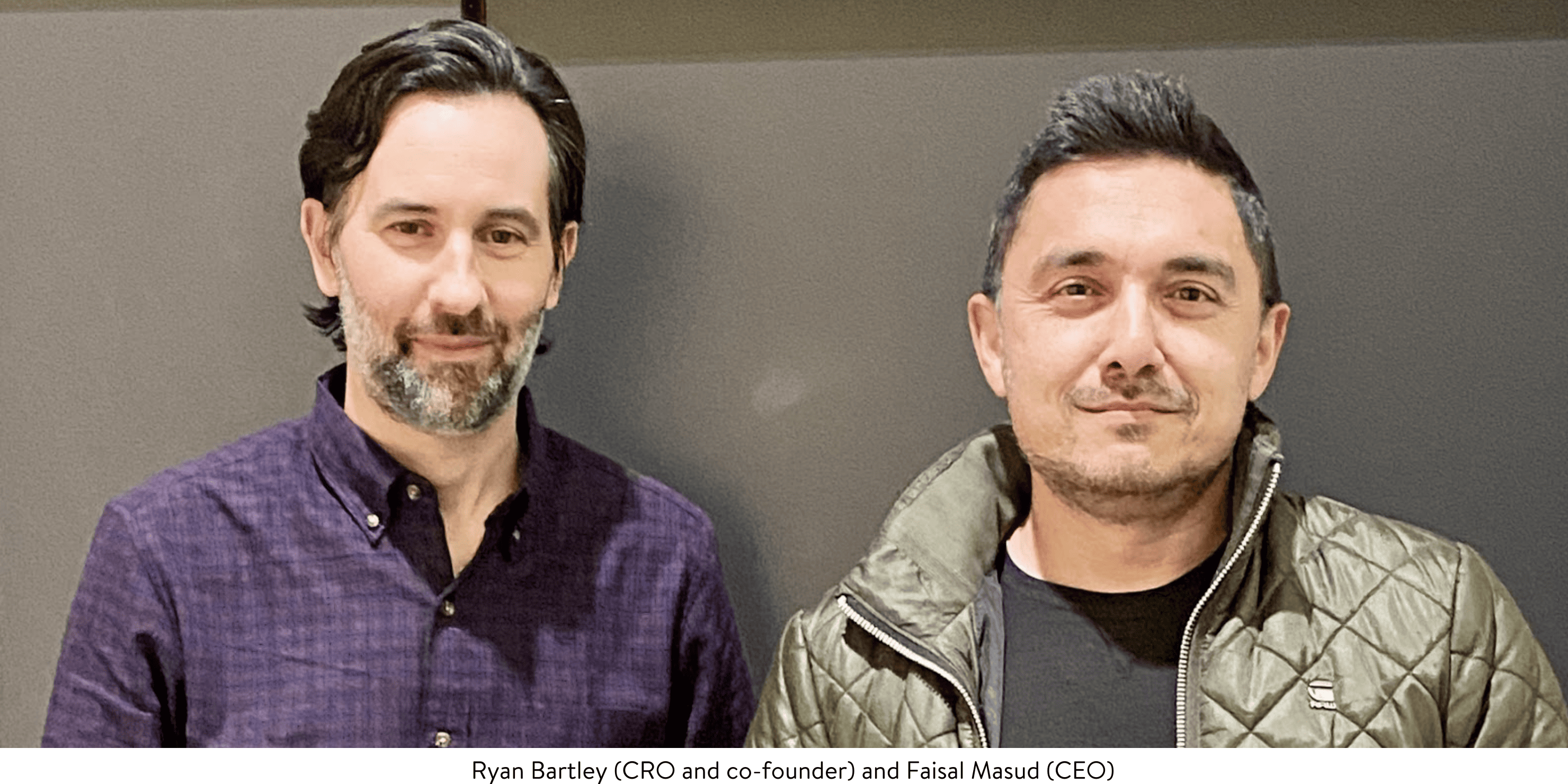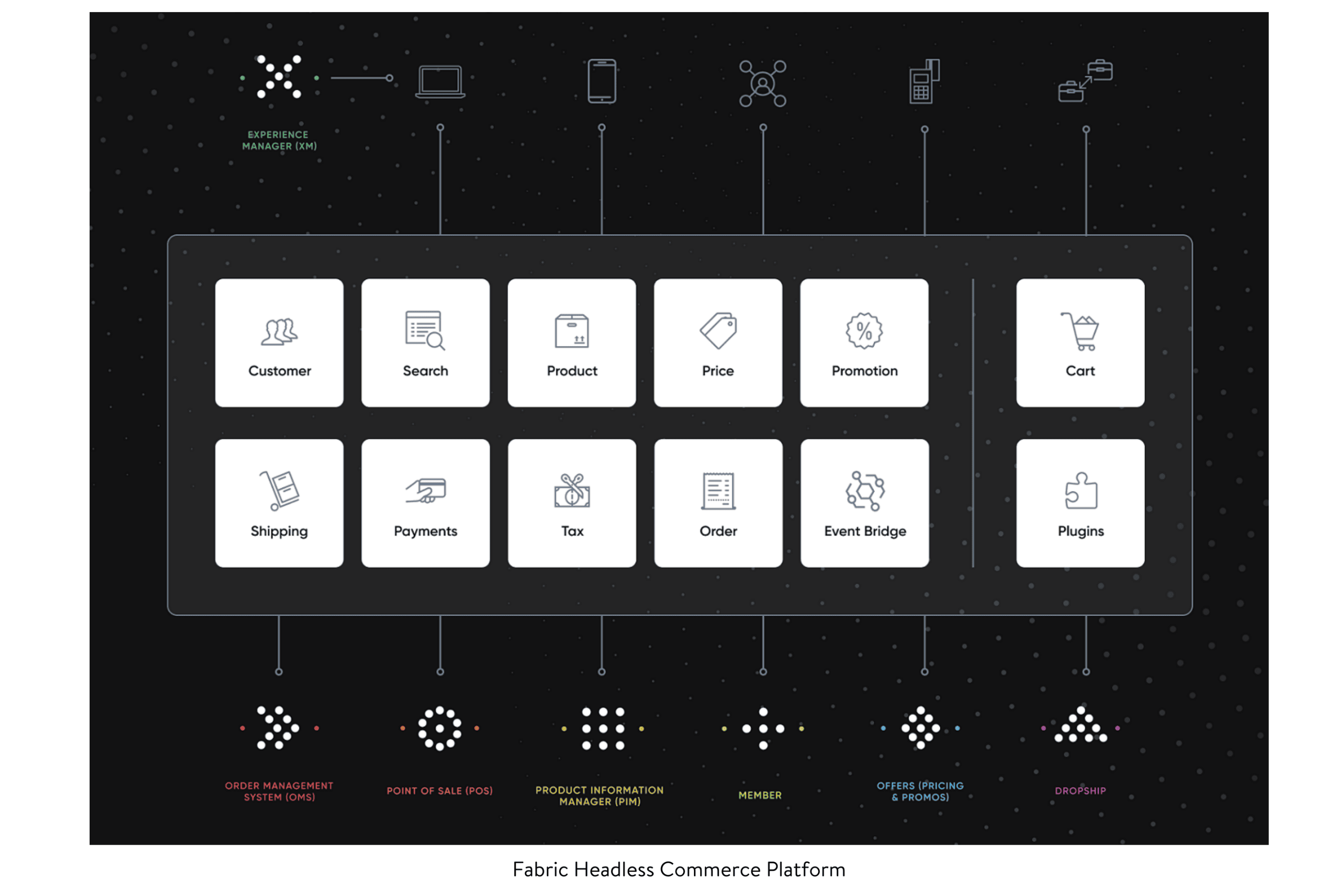“Once in a Lifetime” by Talking Heads is a work of genius. I’m not the kind of person that often ruminates on the choices that have gotten me to where I am today, but this song always puts me in an introspective mood. While I will use any excuse no matter how flimsy to bring up great music, this actually came up on my playlist while I was writing this post. As soon as David Byrne asked, “Well, how did I get here?” I couldn’t think of a better way to frame the intersection of opportunity, experience, and hard work that has defined the journey taken by Ryan Bartley and Faisal Masud on their way towards becoming the leaders of Fabric, a headless commerce platform and my latest investment at Norwest.
Before I get into Ryan and Faisal’s trajectory, it might help if I back up and tell you about a specific stop on my own strange and wonderful journey that ultimately led me to invest in Fabric. One of my many jobs before joining Norwest was co-founder of an e-commerce business. Imagine two part-time musicians in 2005 with absolutely zero retail experience jumping headfirst into a 2-foot deep swimming pool known as online retail. What we did know was how to write code and build software, so one thing led to another and…we ended up building an online shopping platform from the ground up. I still remember the pain of having to build all the components in a single stack (microservices were just a glimmer in developers’ eyes at the time). The problem was that it was an extremely rigid construct and retailers wanted (needed!) flexibility. So, rather than scrap the whole thing, we employed an “if we build it, they will come” strategy and put it to use ourselves. The platform was the focus, so in creating our own retail business on top of it, we went through a number of market iterations before settling on the furniture biz.
To this day, I am still amazed we were able to grow the business for five years given how little we knew at the start, though the daily panic of having no choice but to succeed meant that we learned a great deal during that time. We came to realize that the platform was just barely robust enough to handle the numerous variables needed for each product, but making any changes to the site took an immense amount of time and really required a technical team to make them. The mere size compared to, say, books or clothing, made the physical aspect of online furniture selling (warehousing, shipping, returns) so much more painful. It would have been great to integrate business operations – customer service, logistics and marketing platforms – but this was extremely difficult and limiting due to the early state of API’s at the time. I dreamt of a future where everything was modular and easy to assemble like a software Lego set with an infinite number of pieces. Little did I know that time would arrive in less than two decades…
All of this was happening at the tail-end of 1st generation e-commerce, which was characterized by heavyweight on-prem: expensive to deploy (required dev teams and often millions in services) but extremely powerful with the right amount of time and effort (Oracle ATG, SAP Hybris, IBM Commerce). By the time my co-founder and I got out of the furniture and commerce software businesses, cloud had matured and, around 2010, the 2nd generation of online shopping was upon us. Simpler drag-and-drop products emerged (Shopify, Magento, Big Commerce), but lacked the power of their predecessors. It had limited ability to create a brand’s ideal store experience and catered more to smaller businesses.
Today, we are moving into the 3rd wave of e-commerce platforms. 3rd wave products give us the best of both 1st gen and 2nd gen: the power of the complex players of 20 years ago, but built on modern technology. 3rd gen’s “headless commerce” architecture allows for immense scalability and customization by efficiently handling the front-end and back-end separately. This means digital commerce that is modular, flexible and low-code / no-code. It’s finally inexpensive to deploy, yet capable of delivering the most powerful, personal brand experiences in-store design.
Enter Fabric, a leader in the new “Headless Commerce” market
When I initially learned about headless commerce (HC) and players like Fabric, the first thought that came to mind was, does the world really need another e-commerce platform? But they had recently received seed funding from Alex Bard at Redpoint, and Tim Guleri at Sierra. Alex has been a friend for a very long time and I trust him and his instincts; Tim is a legendary investor with whom I’ve always wanted to work. I would have been nuts not to at least investigate further. The more I dug into the product and learned about Ryan, Faisal, and the team the more excited I got.
They might not be household names, but they both bring serious cred to the e-commerce world. Ever heard of the name Jeff Bezos? Well, Faisal Masud was the guy behind some of Jeff’s greatest innovations. How many of you have ever ordered an AmazonBasics product? Faisal and his team created AmazonBasics from scratch and it is now a $2B business inside Amazon. How many of you ever returned anything at Amazon? It was Faisal and his team that built AmazonWarehouse (reverse-logistics platform that powered all the returns back on Amazon). And what about Ryan Bartley? Ryan is a brilliant and humble founder with a remarkable e-commerce pedigree. He’s the former GM of the Mobile Business Unit and Applied Innovation at Staples. He was also the Manager of Product – Global Post Transaction and Returns at eBay before co-founding Fabric. Ryan and Faisal first met while working together while at Staples where Faisal was hired as CDO and later took over as the company CTO.

I’ve been a fly on the wall, watching Faisal and Ryan in action speaking with customers, and they genuinely empathize with their struggles as they’ve faced firsthand the complexity and costs of implementing and maintaining legacy competitors like Oracle, IBM, and Demandware. They knew Shopify’s basic store functionality wasn’t going to cut it for mid-to-large retailers ($15M to $1B in sales) who needed more power and, so, Fabric was born.
Fabric allows brands to build online stores in a completely custom way, resulting in any experience they can dream up but without having to implement all the coding of the older legacy vendors and with much more power than the SMB solutions of the past 10 years. Fabric sells a true, stateless digital commerce platform with all of the most important modules like PIM, CMS, Loyalty Programs, Offers, and more in an a la carte format. They are the only HC company that has a proper drag-and-drop capability in addition to the typical developer code-level version, which means you don’t need a large team of developers to implement your store on Fabric. In comparison, their nearest HC competitor has no graphical UI to administer the product and create stores, which requires their customers to have a large development team to make it work. Fabric is powerful and easy — the only HC shop that can claim that.

These features and capabilities resonated with me; it seemed like Fabric had a window into my past life’s psyche and built solutions to all of my pain points on their platform. Not only easing my pain but surprising me with features I didn’t even know I needed. If Fabric was around when I was still in the e-commerce game, I would have been able to spend more time running the business instead of patching up the platform. Who knows what pinnacles of success I would have reached today.
Fabric allows brands to build online stores in a completely custom way, resulting in any experience they can dream up but without having to implement all the coding of the older legacy vendors and with much more power than the SMB solutions of the past 10 years.
The investor side of me knows that the next 10-15 years of digital commerce will be fundamentally different. As 2020 proved, we have already seen online shopping make the jump from convenient to essential. Brands have quickly adapted, for example, implementing curbside pickup during the pandemic. Consumers are more conscious about their purchases, moving towards brands with their shared values while expecting more personalized service. In turn, brands want to share their stories by building their own custom experiences but are less interested in hiring a team of developers and spending years to achieve this. What I love about Fabric and what makes them truly different is that their simple, straightforward administration makes all of this possible for this next era of user experience. Their platform helps retailers level the playing field and compete with Amazon by enabling capabilities like one- or same-day shipping by decoupling the entire logistics stack, opening up to more modern logistics processes. Retailers can now build and integrate best-of-breed systems (warehousing, warehouse management, long and short-haul shippers, etc.), and share data over that entire value chain to optimize.
Finally, if you’re still reading, thank you for making it this far. I took this one a little long, but here’s what I’m trying to hammer home: online commerce is experiencing a transformation like we’ve never seen, enabling retailers to build exciting new retail experiences that will engage and delight customers for the next decade and beyond … and Fabric is powering this transformation. I am personally honored and humbled to be part of this incredible journey and am relying on Bob Dylan to convey my optimism and finish what David started on a high note. Same as it ever was? No sir, “the times they are a-changin”.
Online commerce is experiencing a transformation like we’ve never seen, enabling retailers to build exciting new retail experiences that will engage and delight customers for the next decade and beyond … and Fabric is powering this transformation.

